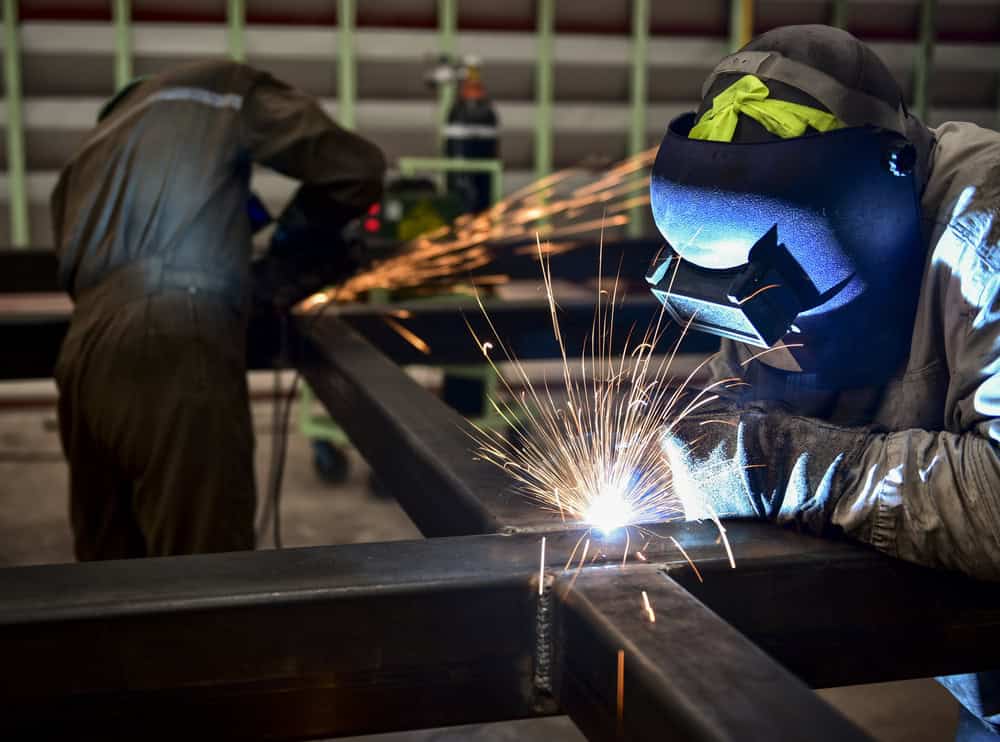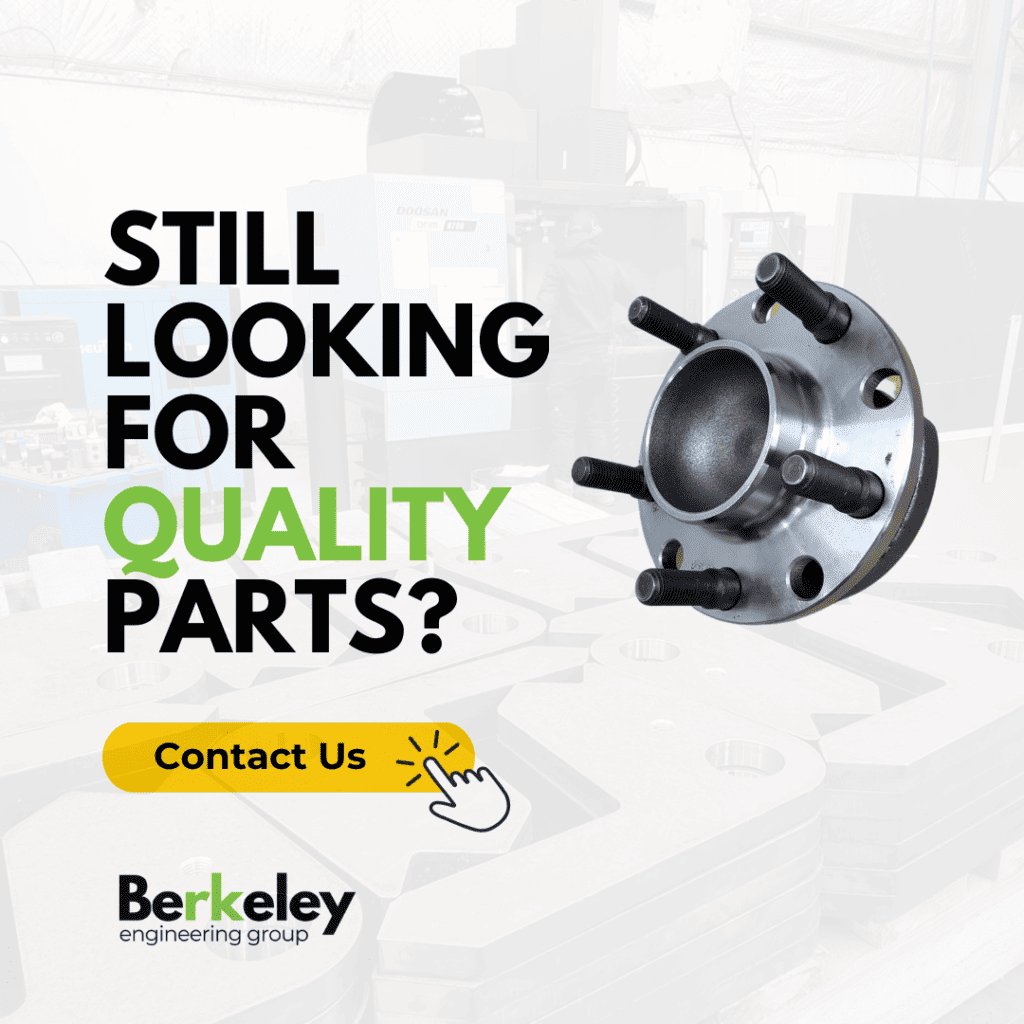
What Is a Metal Fabrication Machine and How Does It Work?

Introduction
Metal fabrication plays a crucial role in modern engineering, supporting everything from construction and automotive to advanced manufacturing. As the demand for precision and scalability increases, so too does the importance of high-quality, high-volume metal fabrication services. Berkeley Engineering, a long-standing leader in this space, offers cutting-edge capabilities tailored to large-scale industrial requirements.
Key Takeaways
- Metal fabrication involves cutting, shaping, and assembling metal parts.
- Machines used in fabrication range from CNC machines to laser and plasma cutters.
- High-volume production is critical for industries like construction, automotive, and defence.
- Berkeley Engineering offers advanced in-house capabilities tailored for industrial clients.
Summary Table
| Feature | Details |
|---|---|
| Core Processes | Cutting, forming, machining, welding, finishing |
| Machinery | CNC machines, laser/plasma cutters, press brakes, robotic welders |
| Industries Served | Construction, defence, mining, agriculture, transport |
| Berkeley Capabilities | High-volume output, ISO certified, CNC precision, rapid turnaround |
Article
Understanding High-Volume Metal Fabrication
Metal fabrication is the process of transforming raw metal materials into finished products through various techniques such as cutting, bending, welding, and assembling. In Australia, this industry is integral to sectors like construction, automotive, aerospace, and manufacturing, contributing significantly to the economy and infrastructure development.
High-volume metal fabrication refers to the large-scale production of metal components, often involving automated processes and advanced machinery to ensure efficiency, consistency, and precision. This approach is essential for industries that require mass production of parts without compromising on quality.
Berkeley Engineering: A Leader in High-Volume Metal Fabrication
Berkeley Engineering has been at the forefront of metal fabrication in Australia for over 90 years. Their commitment to quality, innovation, and customer satisfaction has made them a trusted partner for businesses requiring high-volume metal fabrication services.
Key aspects of Berkeley Engineering’s high-volume fabrication services include:
- Advanced CNC Machining: Utilising state-of-the-art CNC machines for complex, high-precision components.
- Comprehensive Services: From design and prototyping to final production and assembly.
- Quality Assurance: ISO 9001:2015 certified processes.
- Rapid Turnaround: Fast production times starting from just one business day.
Core Processes in High-Volume Metal Fabrication
1. Cutting
- Shearing: Straight cuts for sheet metals.
- Laser Cutting: Precision cuts ideal for complex designs.
- Plasma Cutting: Efficient for thicker, conductive metals.
- Waterjet Cutting: Cold cutting method preserving material properties.
2. Forming
- Bending: Press brakes create angular shapes.
- Rolling: Shapes metal into curves and cylinders.
- Stamping: Imprints designs using high-tonnage presses.
- Hydroforming: Ideal for automotive-grade lightweight parts.
3. Machining
- Milling: Rotary cutters form complex geometries.
- Turning: Produces cylindrical parts.
- Drilling: Creates precision holes for assembly.
4. Welding
- MIG, TIG, Stick Welding: For strong, reliable joins across materials.
- Berkeley’s skilled technicians ensure consistent quality.
5. Finishing
- Painting, Powder Coating, Polishing: Enhances durability and aesthetics.
Applications of High-Volume Metal Fabrication
- Construction: Frameworks, cladding, roofing.
- Automotive: Body panels, engine mounts.
- Aerospace: Structural components.
- Consumer Goods: Durable, finished metal parts.
Berkeley Engineering’s capabilities align with these applications, offering scalable solutions for industrial needs.
Materials Used
- Steel: Strong and versatile.
- Aluminium: Lightweight and corrosion-resistant.
- Copper: Excellent conductivity.
- Stainless Steel: Durable and hygienic.
Advancements in Technology
- CNC Machining: Boosts precision and scalability.
- Laser/Plasma Cutting: Efficient, clean cuts.
- Robotic Welding: Ensures repeatability and safety.
- 3D Printing: Rapid prototyping for metal components.
Berkeley Engineering remains at the cutting edge with continuous investment in new technology.
Industry Outlook in Australia
The Australian metal fabrication market is valued at approximately AUD 665 million and is set to grow at 4.5% annually through 2034. As industries push for sustainability and automation, businesses like Berkeley Engineering play a pivotal role in supporting this transition with reliable, high-volume production.
FAQs
Q1: What is the difference between metal fabrication and welding? Metal fabrication is a broad process that includes cutting, shaping, and assembling metals. Welding is a specific method used within this process to join metal parts.
Q2: How does CNC machining benefit metal fabrication? CNC machining ensures precision and repeatability, especially important in high-volume production for maintaining consistency and quality.
Q3: What factors influence the choice of metal in fabrication? Material choice depends on required strength, weight, corrosion resistance, and application-specific needs.
Q4: Can metal fabrication be customised for specific projects? Yes, especially with CNC and CAD technologies, metal fabrication can be tailored to bespoke designs and specifications.
Q5: What safety measures are essential in metal fabrication? Safety includes PPE use, machine guarding, operator training, and adherence to Australian safety standards.
{ “@context”: “https://schema.org”, “@type”: “FAQPage”, “mainEntity”: [ { “@type”: “Question”, “name”: “What is the difference between metal fabrication and welding?”, “acceptedAnswer”: { “@type”: “Answer”, “text”: “Metal fabrication is a broad process that includes cutting, shaping, and assembling metals. Welding is a specific method used within this process to join metal parts.” } }, { “@type”: “Question”, “name”: “How does CNC machining benefit metal fabrication?”, “acceptedAnswer”: { “@type”: “Answer”, “text”: “CNC machining ensures precision and repeatability, especially important in high-volume production for maintaining consistency and quality.” } }, { “@type”: “Question”, “name”: “What factors influence the choice of metal in fabrication?”, “acceptedAnswer”: { “@type”: “Answer”, “text”: “Material choice depends on required strength, weight, corrosion resistance, and application-specific needs.” } }, { “@type”: “Question”, “name”: “Can metal fabrication be customised for specific projects?”, “acceptedAnswer”: { “@type”: “Answer”, “text”: “Yes, especially with CNC and CAD technologies, metal fabrication can be tailored to bespoke designs and specifications.” } }, { “@type”: “Question”, “name”: “What safety measures are essential in metal fabrication?”, “acceptedAnswer”: { “@type”: “Answer”, “text”: “Safety includes PPE use, machine guarding, operator training, and adherence to Australian safety standards.” } } ] }
Who are we?
Berkeley Engineering has a rich history of producing high-quality components since 1931. Our CNC machining operations in Australia offer a comprehensive range of services, including CNC turning, metal fabrication, plasma cutting and more. We are dedicated to delivering custom components of the finest quality for your projects. Whether you require low or high volume production, our manufacturing services are cost-effective and efficient, with turnaround times as fast as one business day.
Contact Us:
We'd love to discuss your next project and how our partnered solutions can scale with your business operating needs.


